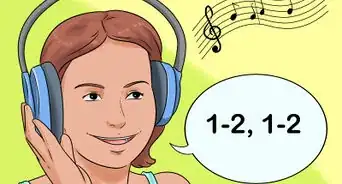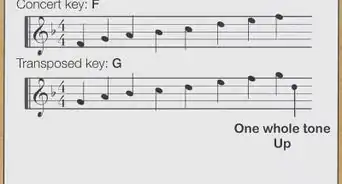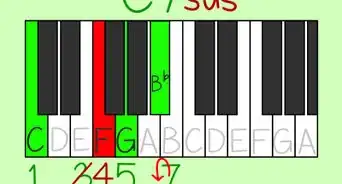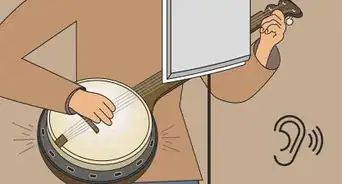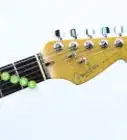This article was co-authored by Michael Noble, PhD and by wikiHow staff writer, Megaera Lorenz, PhD. Michael Noble is a professional concert pianist who received his PhD in Piano Performance from the Yale School of Music. He is a previous contemporary music fellow of the Belgian American Educational Foundation and has performed at Carnegie Hall and at other venues across the United States, Europe, and Asia.
This article has been viewed 319,714 times.
Being able to play or sing by ear is a great skill for any musician, whether you sing or play an instrument. It can be especially useful if you can’t find a score or tabs for a song you want to learn. To learn a song by ear, start by getting familiar with the melody, rhythm, and tempo of the song. Then, you can move on to getting the chords and harmonies down.
Steps
Learning the Melody and Timing
-
1Listen to the song over and over. In order to learn a song by ear, you’ll need to start by getting thoroughly familiar with the way it sounds. Sit in a quiet room with no distractions and listen to the song on repeat for a while.
- You may find it helpful to listen to the song with a pair of good, noise-canceling headphones. These will block out background noise and help you hear details you might otherwise miss.
- Spare your hearing by keeping your music device’s volume below 60% of its maximum volume, and don’t listen to the song for longer than 60 minutes at a time.[1]
-
2Count out the rhythm of the song as you listen. Understanding the tempo and time signature of the song will help solidify the melody in your head. As you listen to the song, tap your foot, clap your hands, or snap your fingers along with the beat. Think about how the notes of the melody fit to the beat.
- For example, “Twinkle Twinkle Little Star” has a 4/4 time signature, which means there are 4 beats to each measure of the song.
- In the first measure, there is 1 note per beat, with each syllable of the phrase “twinkle twinkle” landing on its own beat. In the second measure, the first 2 notes (“lit-tle”) land on the first 2 beats, and the 3rd note (“star”) is held for 2 beats. This pattern repeats throughout the whole song.
Advertisement -
3Break the melody down into parts. Most songs follow some kind of identifiable structure, although the structure may vary depending on the genre of the song. Divide the melody up into recognizable parts, such as the intro, verse, chorus (or refrain), and bridge.[2]
- For example, a typical pop song may have a structure such as “Verse-Refrain-Verse-Refrain-Bridge-Refrain.”
-
4Sing along with the song. Once you’ve listened to the song and analyzed it, try singing along while you listen. Even if you plan to play the song on an instrument, singing will help train your ear and lock the melody into your memory. Sing along until you’re confident enough to sing or hum the melody without listening to the song.
- Work on singing the song in sections. Try singing the first verse, then sing the verse and the refrain, then add in the bridge and chorus, and so on. Keep working until you can sing the entire song without the recording.
- After singing the song on your own a few times, listen to the song again to be sure you’ve got it down.
-
5Identify the first note of the melody. Unless you have perfect pitch, you will probably need to use an instrument to help you find the first note. After listening to the song, hum the first note and try to find it on your instrument. If you have to, listen to the opening of the song on a loop a few times until you manage to find the first note.
- Once you find the first note, write it down. Even if you can’t write musical notation, just write down the name of the note (e.g., “A♭”).
-
6Find the next note on your instrument. Once you’ve identified the first note, your job gets a lot easier! Think about how the second note sounds relative to the first one. Is it higher, or lower? Does it sound close to the first note, or is there a big difference in pitch? Once you have an idea of where the notes are relative to each other, work your way up or down from the first note to find the second.
- Doing interval training (i.e., learning to recognize the intervals between notes by ear) will help this task come much more naturally. Try interval training exercises (like the one here: https://tonedear.com/ear-training/intervals) to help you develop relative pitch.
-
7Write out your notes in sequence. Once you’ve figured out the second note, move on to the next. Write down each note as you figure it out, until you have the whole melody written down.
- You may also find it helpful to mark out the timing somehow. For example, you might write out the beats for each measure and write each note below the beat(s) it falls on.
-
8Work out the easiest way to play the melody on your instrument. If you’re playing the song on an instrument, such as a guitar or a piano, consider what fingering will work best with the melody. This will take some experimentation, but if you’ve had a lot of practice playing scales and arpeggios, you may already have a sense of what works.[3]
- For example, if you’re playing the melody on a piano, consider whether it might be better to cross your ring finger over your thumb to reach a lower note rather than move your whole hand down.
-
9Practice playing the melody until you have it memorized. Once you have your notes figured out and your fingering locked in, it’s time to practice, practice, practice. Play the song over and over until you can do it confidently without looking at your notes or your hands, if you're playing an instrument.
- You may find it helpful to break the song up into smaller sections. Once you get comfortable with one section, move on to learning the next.
- Once you think you have it down, try playing along with the song to make sure you have the timing and melody right.
Figuring out Chords
-
1Familiarize yourself with common chord progressions in your genre. Most songs in Western music are built around a set of common chord progressions, built on the diatonic scale.[4] Once you know which progressions are most common in the music you listen to, you’ll have a much easier time identifying them in songs you want to learn.
- Diatonic chords are numbered with Roman numerals according to the position of the root note on the scale. For example, the I chord on the C major scale is the C tonic chord (C-E-G), consisting of the 1st, 3rd, and 5th notes of the C major scale.
- Minor chords are written with lower case Roman numerals (e.g., i, ii, iv, etc.).
- One of the most common chord progressions in Western popular music is I-IV-V-I.
-
2Practice identifying chords by sound. Try playing common chords and really paying attention to what they sound like. Don’t just stick to root positions (where the notes played are the 1st, 3rd, and 5th notes, or scale degrees, of the key)—practice listening to inversions, too (such as 3rd, 5th, 8th). Listen to 7th, diminished, and augmented chords as well as basic major and minor triads. The more you listen to the chords, the more familiar they will become.
- For example, in C Major, the root notes are C, E, and G, while E, G, and C, are the 3rd, 5th, and 8th scale degrees, respectively, of the first inversion of C.
- Try quizzing yourself with a chord identification tool like this one: https://tonedear.com/ear-training/chord-identification
-
3Determine whether the song is in a major or minor key. Songs written in major keys tend to sound bright, upbeat, happy, or hopeful, while minor keys lend a gloomy, sad, or scary sound. The easiest way to determine whether a song is major or minor is simply to listen to the overall “mood” of the piece.[5]
- While the chords in a minor key song will primarily be minor chords, there will likely be some major chords mixed in. The reverse is also true of major key songs.
-
4Identify the tonic (I) chord. Once you’ve figured out the tonic chord, you will have a good foundation for figuring out the rest of the song. Most songs end on the tonic (I) chord, and many also begin there. The tonic chord should be the predominant chord throughout the song, and hearing it will give you a sense of completion or satisfaction.[6]
- For example, “Twinkle Twinkle Little Star,” when played in the key of C major, begins and ends on a C major tonic chord.
-
5Use the bass line as a guide to find other chords. In most songs, the bass line is the harmonic accompaniment to the melody. The bass line tends to be built on the root notes of each chord in the song. This means that if you can figure out the notes of the bass “melody,” you can pinpoint the root of each chord and build from there.[7]
- For example, if you are listening to “Twinkle Twinkle Little Star” in C major, you may identify the notes C, F, C, F, C, G, C in the bass line of the first 4 measures. These are the root notes of the chords for those measures.
- Once you’ve figured out the root notes, ask yourself about the quality of each chord. Does it sound major or minor? Do you hear tones other than the 1st, 3rd, and 5th notes of the chord (e.g., the 7th)?
-
6Practice playing the chords in sequence. After you’ve figured out the chords, play them in order, following the rhythm of the piece. You may find it helpful to play along with a recording of the song to make sure that you have the timing right.
-
7Put the chords and melody together. Depending on the type of instrument you’re playing, this could mean playing the different parts together or playing the chords as accompaniment to a voice or a second instrument. Run through the song several times to make sure that your chord changes are timed correctly with the melody.
- For example, if you are playing the piano, you will probably play the chords primarily with your left hand while your right hand carries the melody.
Expert Q&A
Did you know you can get premium answers for this article?
Unlock premium answers by supporting wikiHow
-
QuestionIs playing by ear a gift?
 Michael Noble, PhDMichael Noble is a professional concert pianist who received his PhD in Piano Performance from the Yale School of Music. He is a previous contemporary music fellow of the Belgian American Educational Foundation and has performed at Carnegie Hall and at other venues across the United States, Europe, and Asia.
Michael Noble, PhDMichael Noble is a professional concert pianist who received his PhD in Piano Performance from the Yale School of Music. He is a previous contemporary music fellow of the Belgian American Educational Foundation and has performed at Carnegie Hall and at other venues across the United States, Europe, and Asia.
Professional Pianist
-
QuestionHow do you score a song perfectly?
 Michael Noble, PhDMichael Noble is a professional concert pianist who received his PhD in Piano Performance from the Yale School of Music. He is a previous contemporary music fellow of the Belgian American Educational Foundation and has performed at Carnegie Hall and at other venues across the United States, Europe, and Asia.
Michael Noble, PhDMichael Noble is a professional concert pianist who received his PhD in Piano Performance from the Yale School of Music. He is a previous contemporary music fellow of the Belgian American Educational Foundation and has performed at Carnegie Hall and at other venues across the United States, Europe, and Asia.
Professional Pianist
-
QuestionHow do you find the tonic of a song?
 Michael Noble, PhDMichael Noble is a professional concert pianist who received his PhD in Piano Performance from the Yale School of Music. He is a previous contemporary music fellow of the Belgian American Educational Foundation and has performed at Carnegie Hall and at other venues across the United States, Europe, and Asia.
Michael Noble, PhDMichael Noble is a professional concert pianist who received his PhD in Piano Performance from the Yale School of Music. He is a previous contemporary music fellow of the Belgian American Educational Foundation and has performed at Carnegie Hall and at other venues across the United States, Europe, and Asia.
Professional Pianist
References
- ↑ http://campaignforbetterhearing.ca/2016/06/5-ways-to-listen-to-music-without-damaging-your-ears/
- ↑ https://courses.lumenlearning.com/musicappreciation_with_theory/chapter/binary-form/
- ↑ https://www.pianoscales.org/fingerings.html
- ↑ https://www.musical-u.com/learn/exploring-common-chord-progressions/
- ↑ https://www.musical-u.com/learn/how-to-recognize-major-and-minor-keys/
- ↑ https://www.musical-u.com/learn/how-to-recognize-major-and-minor-keys/
- ↑ https://www.musical-u.com/learn/how-do-you-hear-the-difference-between-bass-line-and-melody/
About This Article
Figuring out a song by ear is an advanced skill, but with the right method and a little patience, you can do it. Start by listening to the song a bunch of times to familiarize yourself with it if you haven’t already. Then, write down the structure of the song so you can focus on one part at a time. For most modern music, this will consist of verses, choruses, and maybe a bridge, intro, and outro. Once you’ve figured out the structure, write out the notes of the melody. If you can’t recognize pitches by ear, you can use a piano, guitar, or other instrument to help you find the right notes. After you’ve got the melody down, work out the chords for each part. If you’re struggling, try using the bass line to help you, since the notes will usually be the root of each chord. For more tips from our Musical co-author, including how to figure out a song’s time signature, read on!


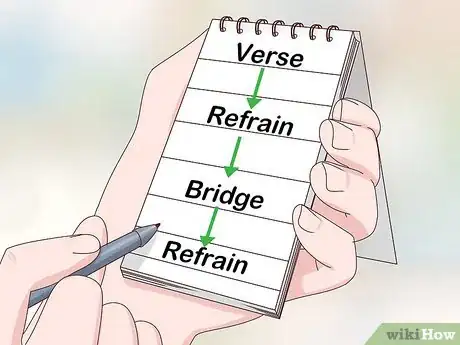

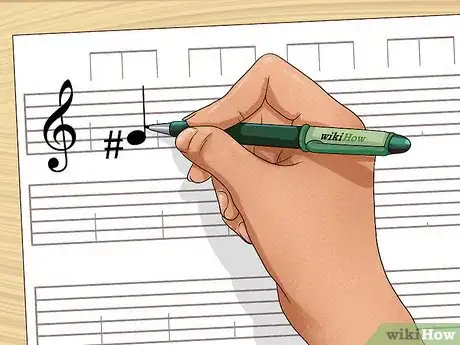
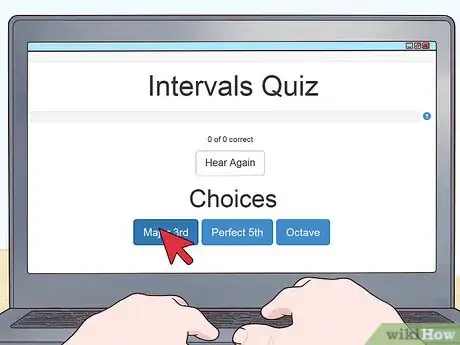
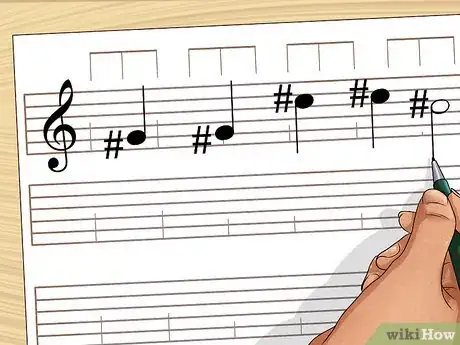
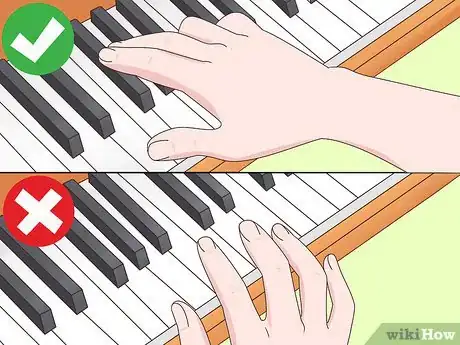


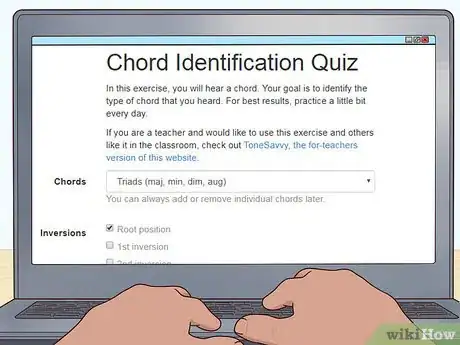


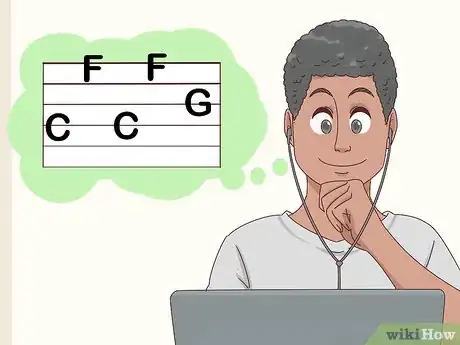

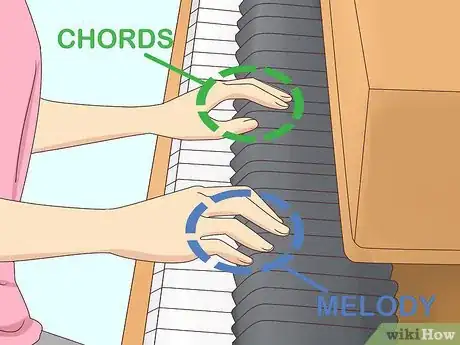


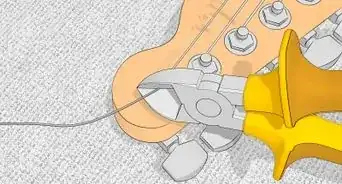
-of-a-Song-Step-9.webp)
